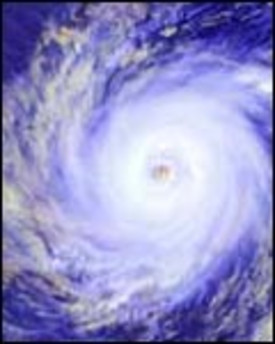How Hurricanes Form
Hurricanes need warm tropical oceans, moisture and light winds above them. If the right conditions last long enough, a hurricane can produce violent winds, incredible waves, torrential rains and floods.
 |
||||
|
||||
Hurricanes rotate in a counterclockwise direction around an “eye.” Hurricanes have winds of at least 74 miles per hour. There are on average six Atlantic hurricanes each year; over a three-year period, approximately five hurricanes strike the United States coastline from Texas to Maine.
Tropical Depression
A tropical depression is an organized system of clouds and thunderstorms with a defined surface circulation and maximum sustained winds of 38 mph.
Tropical Storm
A tropical storm is an organized system of strong thunderstorms with a defined surface circulation and maximum sustained winds of 39-73 mph.
When a Hurricane Strikes
When hurricanes move onto land, the heavy rain, strong winds and heavy waves can damage buildings, trees and cars. The heavy waves are called a storm surge. Storm surge is very dangerous and a major reason why you MUST stay away from the ocean during a hurricane warning or hurricane.




























